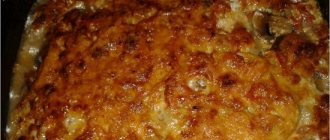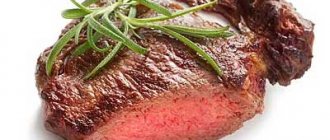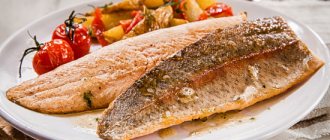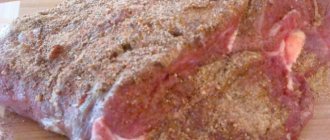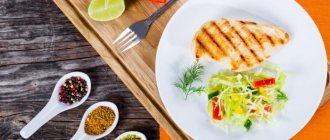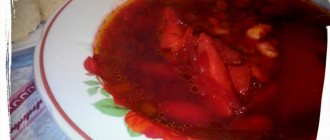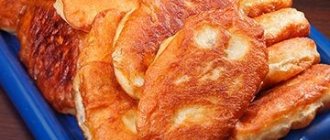What are the benefits of fish cutlets?
How many calories are in a fish cutlet, what beneficial properties it has, all this is of great interest to those who lead a healthy lifestyle and monitor their health and figure. So we will try to answer these questions in the next article.
So here it is:
Fish cutlets are a hearty and extremely tasty dish that is also easy on the budget. It was known to our great-great-grandmothers. This dish made from minced fish can be a real find for gourmets. It is tender, juicy, and not at all difficult to prepare. Today there are a lot of recipes for fish cutlets - they can be found in almost any national cuisine in the world. It is precisely because of the taste and beneficial qualities that distinguish fish cutlets that the calorie content of this dish is of interest to those who are trying to control the amount of calories introduced into the body.
If you introduce more fish dishes into your daily menu, it will only benefit your health. Fish oil is significantly different in composition from beef and pork - it belongs to the group of low-melting fats and is minimally harmful to health. Moreover, the fat of some fish is very healthy; it is not without reason that it has long been used as a food additive. So lovers of fatty dishes who deny themselves pork chops can regularly treat themselves to tender herring, exquisite salmon or aromatic mackerel.
"Fish" gold
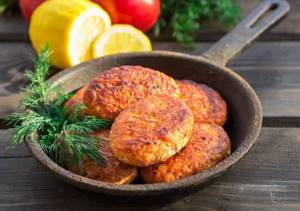
Almost all people probably know that fish and other seafood contain large amounts of phosphorus, iodine and fatty acids. Accordingly, the use of such products brings great benefits to the human body. First of all, the functioning of the thyroid gland is normalized, iodine deficiency is replenished, which is extremely necessary for maintaining cognitive functions, hormonal levels and proper functioning of the brain. But this is not all the beneficial properties that fish and fish cutlets have.
Beneficial features:
- improving the condition of the skin and hair;
- prevention of the development of atherosclerosis;
- strengthening vascular walls;
- prevention of the development of inflammatory processes.
Nutritionists and gastroenterologists do not recommend eating cutlets fried at all. Give preference to baked dishes or steamed cutlets. By the way, in the latter version, all nutrients, vitamin components, micro- and macroelements are preserved in the fish to the maximum.
When calculating nutritional values, don't forget to consider what other ingredients you're adding. As a rule, minced fish is supplemented with chicken eggs, semolina, vegetables, and herbs.
How many calories are in a fish cutlet?
Here's how much:
Prepare cutlets according to this recipe:
Products (for 10 servings):
- Fish fillet (for example pollock) - 800 g - (576 kcal)
- White bread – 300 g. – (810 kcal)
- Chicken eggs - 2 pcs. — (188 kcal)
- Milk - 400 ml. — (208 kcal)
- Onion - 1 pc. — (45 kcal)
- Vegetable oil - 50 g - (450 kcal)
- Ground black pepper - 1 pinch
- Salt - 2 teaspoons.
How to cook:
- We wash the pollock fillet and cut it into pieces.
- Peel the onion, wash it and cut it into 4 parts.
- Soak the bread in milk.
- We pass the fillet, bread and onions through a meat grinder.
- Salt, pepper, add chicken eggs and mix the minced meat well.
- Form cutlets and place in a heated frying pan with vegetable oil.
- Fry the cutlets on both sides over medium heat until golden brown.
Based on the posted recipe:
The calorie content of fried pollock fish cutlets per 100 grams is:
You haven't tried anything like this before!
Fish cutlets can be prepared according to any recipe. The taste will depend on the fish you took. We invite you to take note of the original recipe for such a dish with the addition of pumpkin pulp. Let's take mackerel fillet as a basis. The cutlets will turn out healthy because we will bake them in the oven.
On a note! A fireproof pan can be lined with parchment paper or a silicone mat. In this case, you will not have to use oil.

Ingredients:
- fresh frozen mackerel fillet – 750 g;
- dried parsley - one teaspoon. spoon;
- ground allspice, salt;
- dried basil;
- selected chicken egg - one piece;
- semolina – 100 g;
- pumpkin pulp – 350 g;
- onion – 300 g.
Preparation:
- Let's start cutting the fish right away. We clean the mackerel, gut it and rinse thoroughly. We remove the ridge and remove large bones. Small bones will not be felt as a result of twisting in the meat grinder.
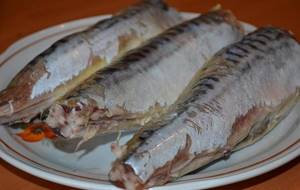
- Peel the pumpkin pulp.

- Peel the onion and cut each head into quarters to make it easier to chop.

- First, pass the pumpkin pulp through a meat grinder.

- Then add the fish fillet along with the onion.

- Mix the resulting mass and add a raw chicken egg.

- Combine dried basil and parsley in a mortar. Grind the bulk ingredients thoroughly.
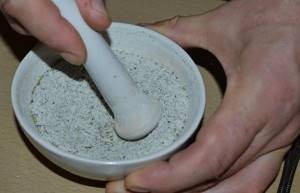
- Add about one teaspoon to the minced meat and add salt.
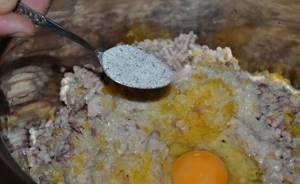
- Season with ground allspice.
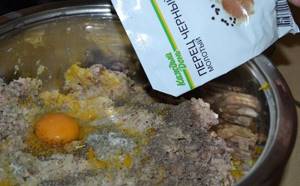
- Next, add semolina.
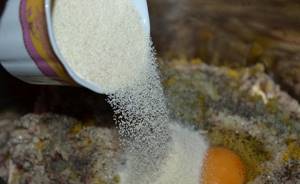
- Stir the minced meat vigorously to avoid lumps.
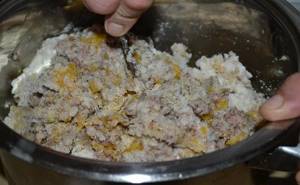
- We wet our hands with water and make cutlets. For convenience, you can put the minced meat in the refrigerator for a quarter of an hour.
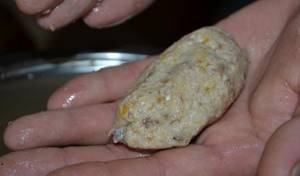
- Transfer the cutlets to a fireproof dish so that they do not touch each other. Place in the oven.
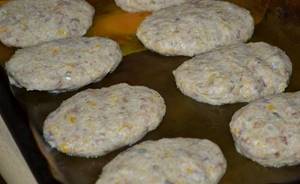
- Set the temperature to 180° and bake for about half an hour.
A spoon of tar…
Like any other product, fish also has its drawbacks. Its harm lies in the probable content of helminths, but do not be upset, this only applies to eating meat in unprocessed, that is, raw form. Freshwater fish are considered the most dangerous in this sense; by thoroughly frying or boiling, the risk of infection is minimized.
Smoked fish is useless and somewhat harmful; it contains carcinogenic substances that can stimulate the development of cancer, so consuming such a product is extremely undesirable.
– this is a dish that should be on the dinner table at least once a week. They can be prepared from almost any fish, the main difference will be the calorie content of the product, as well as the content of nutrients and microelements in it. Most often this dish is prepared from pollock, pike, and pike perch.
Steamed cutlets - dietary dish
Before moving on to considering calorie content, you need to understand whether this product is healthy or is it better to replace fish cutlets with simple steamed or fried fish?! In kindergartens, schools, and public canteens there are always fish cutlets on the menu. They are there not because their cost is quite low and cooking is not so difficult, but mostly because fish cutlets have a number of positive and useful properties, among which are:
- Rapid absorption of fish protein by the body. The period of its absorption is approximately three hours
- Fish cutlets are much more tender and softer than meat cutlets, making them easy to eat even for small children
- Contains a large amount of vitamin D, which helps reduce cholesterol levels in the blood
- The content of vitamin B6 and B12 in fish suggests that fish helps strengthen the immune system, as well as normalize the functioning of the nervous system
- High content of various amino acids that are involved in the metabolism of substances such as calcium, sodium, etc.
- Has a positive effect on musculoskeletal composition, since fish contains phosphorus
Fish cutlets contain almost all the necessary vitamins, microelements and minerals that the human body needs for normal functioning. That is why eating fish cutlets is not only profitable, but also very healthy.
Some recipes
The calorie content of fish cutlets depends on the type of fish itself.
There are many cooking recipes. The main part, of course, is occupied by cutlets made from pike, pollock, and cod. For those who are on a special diet (whether for medical reasons or for the purpose of losing weight), steamed cutlets, whose calorie content barely reaches 30, are very suitable:
- You need to take fish, about 300 grams, one egg, onion, bran, lemon juice and salt and pepper.
- Grind the fish through a meat grinder and chop the onion.
- Then all the above components are combined and mixed.
- After this, small cutlets are made, which are cooked in a double boiler.
Read: Diet for Crohn's disease: what is possible, what is not?
Other recipes:
- Recipe 1. Pollock or hake fillet cutlets. You need to take a kilogram of fillet, two eggs, four pieces of fresh loaf, 200 grams of lard, 6 onions, a pinch of sugar, salt and pepper. You need to squeeze the fillet well after defrosting in order to get rid of excess water. Then grind the fillet, onion and lard through a meat grinder. After this, the loaf is soaked and added to the minced meat, and the eggs are beaten into it. After the minced meat is completely cooked, make small cutlets, which are dipped in flour and fried in a frying pan for about 20 minutes.
- Recipe 2. Cutlets in the oven. You need to take a kilogram of any white fish, Chinese cabbage (about 100 grams), carrots, onions, eggs, bread, herbs, salt and pepper. The fish fillet is defrosted, squeezed out of water and cut into pieces. The fish is twisted with the remaining ingredients, then bread is added there. Then, the baking sheet is greased with oil, cutlets are laid out on it, which during the cooking process must also be sprinkled with oil to obtain a golden color.
- Recipe 3. Steamed cutlets. You need to take 400 grams of any fish (fillet), preferably white or red, carrots, onions, eggs, bay leaves, cloves, salt, pepper, oil. All components should be washed well, vegetables and fish should be finely chopped. Then take a blender and put everything in it. At the same time, pour water into the multicooker bowl and add bay leaves and other seasonings. Here you will need silicone molds into which you will need to put the minced meat. After this is done, the molds are placed in the slow cooker for 20 minutes.
Fish cutlets are one of the low-calorie and very healthy dishes that can be eaten by both adults and children.
Looking for a fish cutlet recipe? Then watch this video - a video recipe for a fish dish:
Read: What is the diet for pancreatitis, Table 5
Read along with this article:
- Fish cutlets: pollock recipe - a well-deserved place on any table
- Fish cutlets in a slow cooker and other fish dietary dishes
- How to prepare a delicious dietary fish soufflé
- How to cook carrot cutlets: the best recipes
- How to cook steamed fish cutlets, recipes, as well as...
- Dietary cottage cheese casserole - benefits and calorie content
- Carp - calories, nutrients, dietary recipes
- Diet for liver and gallbladder disease: what is possible and what...
- Tips for housewives: how to prepare minced meat for cutlets
What to choose?
River fish has a pronounced aroma; dishes made from it are tasty and rich. There is one drawback - its processing is a rather labor-intensive process, since it contains many small bones, but this can be forgiven for its low calorie content. Fish cutlets made from sea creatures are quick to prepare, since they have a minimum of bones, and the fillet is tender and soft. An important criterion for a deliciously prepared dish is the freshness of the products, in our case fish. As you know, its freshness can be determined by its gills and eyes.
The benefits of cod
The following benefits of cod have been proven:
- fish is rich in vitamin B12, which is useful for normalizing blood flow;
- cod vitamin PP restores the functioning of the digestive tract;
- the large amount of sodium and magnesium in fish makes it an indispensable component of nutrition for heart disease;
- cod liver contains many vitamins D and A, which are important for maintaining healthy hair, teeth, and skeletal system;
- Cod iodine is necessary to enhance mental activity;
- fish potassium helps saturate the brain with oxygen and activates the nervous system;
- with regular consumption of the product, the processes of formation of cartilage and bone tissue are normalized;
- cod strengthens the immune system, helps cope with depression and apathy;
- Omega 3 acids contained in fish reduce the concentration of bad cholesterol in the blood and normalize metabolism.
from and properties
Cod habitats are the waters of the Pacific and Atlantic oceans.
The most popular types are:
- Greenlandic;
- Baltic;
- Belomorskaya;
- Atlantic;
- Pacific.
The length of this representative of the marine world is 1.8 m, but, as a rule, cod of 40-80 cm is caught; its meat contains many vitamins: E, B6, H, C, B1, B9, B2, B12, PP, A.
Micro- and macroelements: phosphorus, sulfur, sodium, chlorine, potassium, magnesium, calcium, zinc, chromium, manganese, iron, iodine, copper.
Cod cutlets have low fat content and contain, on average, 164 kcal per 100 g of product. This dish can also be prepared in various variations - baked, steamed, fried, with the addition of spices and other auxiliary products.
Cod is a dietary type of meat, so it is quite relevant for people who are overweight. It is impossible not to note the beneficial properties which are a source of health and beauty.
This fish from the Cod family has a high value in China, while in Russia it receives less attention. Among its many beneficial properties are regulation of blood sugar, antioxidant effect on the body, normalization of the digestive and nervous systems.
- Retinol, or vitamin A, contained in large quantities, has an effect on almost all systems of the body - strengthens vision, gums, protects the respiratory tract from infections, increases the strength of teeth and bones.
- The 23% content of vitamin PP ensures the normalization of digestion and the functioning of the nervous system. Including pollock in food is a good prevention of stomach ulcers, duodenal ulcers, atherosclerosis, etc.
- Vitamins B12 and B6 strengthen the functioning of the immune system, stimulate the synthesis of red blood cells and ensure the successful functioning of the nervous system.
- Vitamin D reduces the amount of cholesterol in the blood, supporting the functioning of the cardiovascular system, and this vitamin is also necessary for the body to absorb calcium more easily.
- Amino acids in pollock, such as methionine, tryptophan, lysine and taurine, are effective in preventing a number of diseases, and they also support the metabolic processes of sodium, calcium, and magnesium in the body.
The beneficial properties of pollock can be listed endlessly; its meat is a dietary product; 100 g of fried fish contains only 98.5 Kcal, which allows it to be consumed by people with gastrointestinal problems and small children with a fragile digestive system.
Calorie content of the dish
Fried fish cutlets will please many people
The calorie content of this dish is directly proportional to which cooking method was chosen, as well as what types of fish are used. So, if we talk about averages, then one fish contains approximately 120-140 calories (even a small cutlet weighs 100 grams). We should also talk about cooking methods and their effect on calorie content. So, some approximate indicators include:
- Steamed cutlets - approximately 70-76 calories per hundred grams
- Cutlets cooked in the oven - approximately 80-90 calories per hundred grams
- Cutlets fried in vegetable oil - approximately 200 calories per hundred grams
Read: What effect does coarse fiber have on the body, what foods contain it?
Also, the calorie content of the dish, as mentioned above, depends on the type of fish. So:
- Pollock cutlets – 104 calories per 100 grams
- Hake cutlets – 140 calories per hundred grams
- Cod cutlets – 110 calories per hundred grams
- Pike cutlets – 280 calories per hundred grams
Despite the fact that cutlets made from pike are considered the most delicious, they are not very suitable for diabetic nutrition, as they are high in calories. It is worth talking separately about steamed cutlets, since they are most often prepared for diabetics, small children, and also for people with stomach problems. The low calorie content in this case is due to the non-use of vegetable oil, as well as a minimum of additional products. Most often, steamed cutlets are prepared from:
- Salmon – 180 calories per 100 grams of finished product
- Pollock – 40 calories per 100 grams of finished product
- Pink salmon – 90 calories per 100 grams of finished product
Before you decide to cook cutlets, you need to clarify what the calorie content of the fish itself is, especially if this plays an important role for a person.
